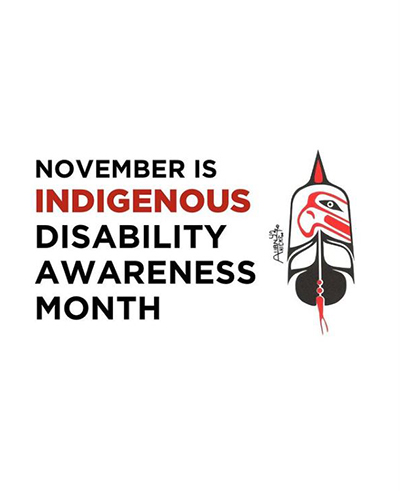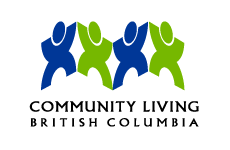 Community Living BC (CLBC) is proud to join our partners and government in recognizing Indigenous Disability Awareness Month (IDAM) this November, now entering its second decade.
Community Living BC (CLBC) is proud to join our partners and government in recognizing Indigenous Disability Awareness Month (IDAM) this November, now entering its second decade.
Established in 2015 by the British Columbia Aboriginal Network on Disability Society (BCANDS), IDAM celebrates the unique contributions of First Nations, Métis, and Inuit people with disabilities across B.C.
November is a time for CLBC staff and service providers to reflect on the importance of walking together in reconciliation with Indigenous individuals, families, and communities. CLBC’s Indigenous Relations team works to improve access to services for Indigenous individuals and communities. The team also continues to raise awareness of available supports and deepen staff understanding of Indigenous history and culture.
“Indigenous Disability Awareness Month is a time to come together to honour the strength, resilience, and voices of Indigenous Peoples with disabilities. As someone with roots in Fisher River Cree Nation and family ties to Skidegate, this month holds personal meaning for me. It reminds us of the importance of listening, learning, and building relationships grounded in respect and reconciliation. I invite everyone to join us in recognizing this month and in creating communities where all people belong and thrive,” said Joanne Mills, Vice President of Quality Services and Indigenous Relations at Community Living BC.
Guided by the Indigenous Advisory Committee, CLBC’s Cultural Safety Policy is built on six key principles as described in this video:
- Culturally Responsive Programming
- Indigenous Anti-Racism
- Indigenous Trauma-Informed and Responsive Approach
- Promoting, Maintaining, and Sustaining Connections
- Person-Centred Approach
- Promoting a Coordinated Service Approach
Charlene Barney is a self-advocate from the St’at’imc Nation in Lillooet. She is an Indigenous Advisory Committee member now living in Victoria on Songhees Territory, who enjoys crafting when she’s not taking part in meetings or working. She explains, “What [cultural safety] means to me is that the people that we get services from have some understanding about our backgrounds and where we came from. I think that’s important because I like a sense of belonging to a group or community.”
In the past year, CLBC has worked to put these principles into practice. In June, the Indigenous Relations team released new guides on Respectful Engagement with Indigenous Peoples and Territorial Acknowledgements. The documents and their guidance help staff and providers build trust and understanding with Indigenous individuals, families, and partner providers .

Nicole Semenoff, President, Board of Directors, Lii Michif Otipemisiwak Family and Community Services, and Ross Chilton, CLBC CEO, sign a formal Collaboration Agreement.
In July, CLBC and Lii Michif Otipemisiwak Family and Community Services (LMOFCS) signed a historic collaboration agreement. LMOFCS serves Métis people in the unceded Tk’emlúps te Secwépemc territory in BC’s interior. They will lead culturally safer, trauma-informed community inclusion programs for Métis individuals eligible for CLBC services. CLBC will support referrals and transitions, especially for young Métis adults.
CLBC is currently developing its 2026 to 2029 Strategic Plan. CLBC is working to ensure that Indigenous individuals, families, and partners have a strong voice in shaping the organization’s goals and services. Learn more on our Strategic Plan page.
Throughout November, follow #IDAM2025 on social media including CLBC’s Facebook page. Join the conversation and celebrate this important month across B.C.

